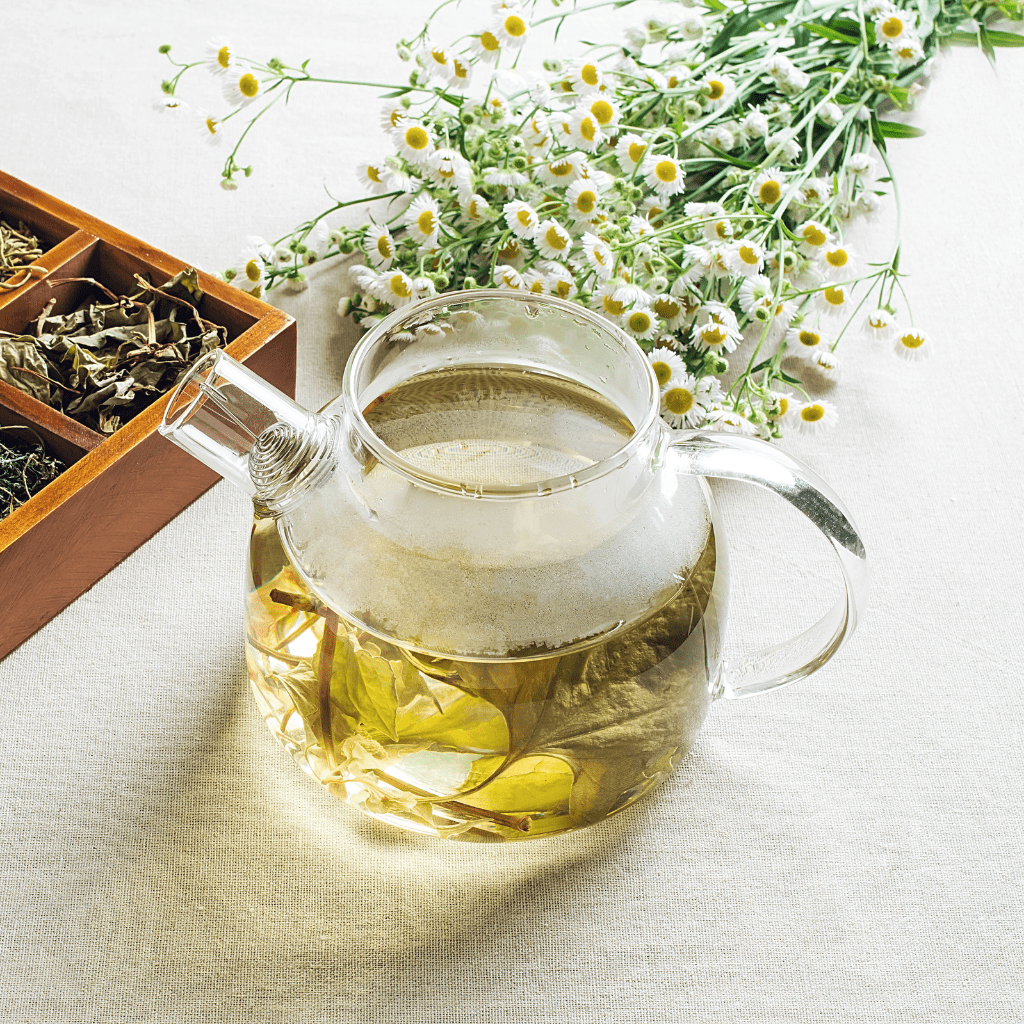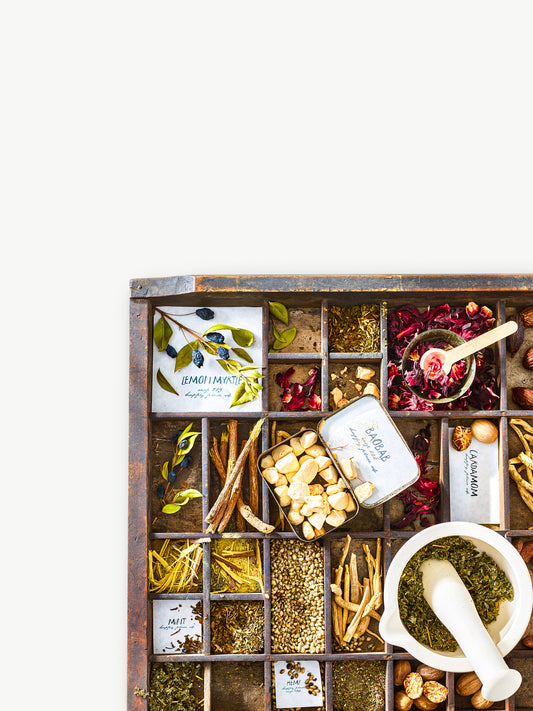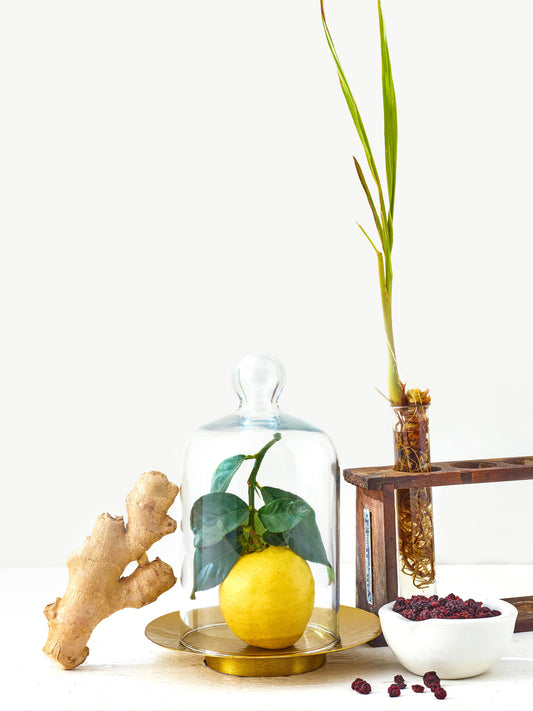What is Chinese Tea? Our Guide to Chinese Tea Types and Benefits
1 min readBrewed by The Herbalistas
Chinese tea, made from the leaves of the Camellia sinensis plant, offers various types with distinct characteristics depending on their processing methods. This guide explores the common types of Chinese tea, their benefits, and the rich history behind them.
The History of Tea in China

Tea has been a cherished part of Chinese culture for centuries. Its origins trace back to 2737 BCE, when Emperor Shen Nong discovered it. Over time, tea became integral to Chinese life, with unique cultivation and preparation methods evolving around it. By the Tang Dynasty in the 7th century, tea was a beloved staple for both elites and common people.
Today, China remains one of the largest tea producers, offering black, green, white, oolong, and pu-erh teas.
Camellia Sinensis Var. Sinensis

The most common tea plant variety in China is Camellia sinensis var. sinensis. Native to China, these plants are smaller and more delicate, with a slightly lower caffeine content compared to the larger, more robust Indian assamica variety.
Types of Chinese Tea
China produces many types of tea, each with unique flavours and characteristics. Let's explore some popular varieties:
Chinese Green Tea

Green tea in China is typically pan-fried or steamed soon after harvesting to prevent oxidation, preserving its green colour and light, grassy taste.
Chun Mee Green Tea
Known as "precious eyebrow" tea, Chun Mee has a plum-like flavour and a buttery, mellow taste.
Dragon Well Green Tea (Longjing)
This hand-crafted tea is considered among the finest, with a nutty flavour, earthy aroma, and refreshing taste.
Gunpowder Green Tea
Named for its tightly rolled leaves, Gunpowder green tea has a smooth, hearty flavour and dark green liquor.
Jasmine Yin Cloud Green Tea
Scented with jasmine blossoms, this tea has a floral perfume and is excellent both hot and iced.
Chinese Black Tea

Chinese black teas, known as "red tea" in China, are fully oxidised, giving them a rich, slightly malty character.
China Keemun Black Tea
With a smoky flavour and toasty notes, this handmade tea from Anhui Province is mellow and amber red.
Lapsang Souchong Black Tea
This tea is known for its distinctive smoky aroma and smooth, crisp character.
Golden Yunnan Black Tea
From Yunnan province, this full-bodied tea has a soft, rounded cup with peppery notes and abundant golden tips.
Chinese White Tea

White tea is subtle, often with a pale yellow colour, and was particularly prized in imperial China.
Jasmine Silver Needle White Tea
Scented with jasmine, this tea offers a well-balanced floral taste.
White Peony White Tea (Pai Mu Dan)
Made from buds and leaves, it has a floral aroma and smooth, velvety taste.
Mango Pear White Tea
This fruity blend includes mango cubes, apple pieces, and pear, making it a refreshing afternoon pick-me-up.
Chinese Oolong Tea

Oolong tea, known as "black dragon" tea, is often associated with the traditional Gongfu Cha tea ceremony.
Fine Ti Kuan Yin Oolong
This highly prized tea has a light, floral taste reminiscent of orchids.
Milk Oolong
With a distinctive milky scent and taste, this tea is hand-rolled and has a mellow buttery flavour.
Ginseng Oolong
Coated with ginseng and blended with licorice root, this tea has a naturally floral cup with a hint of spice.
Chinese Pu-erh Tea

Pu-erh is a type of fermented tea named after the city of Pu-erh in Yunnan province.
Leaf Pu-erh
This tea has an earthy, rich flavour and is known for its health benefits and antioxidants.
Caramel Pu-erh
Combining the sweet decadence of caramel with earthy pu-erh, this tea is smooth and perfect for an afternoon treat.
Cinnamon Pu-erh
Blended with cinnamon, ginger, and orange peel, this tea is rich in flavor and beneficial for digestion.
Our Products
Love chinese tea and want to explore more? Check out our herbal infused tea collection and find your new favourite blend today! We offer a variety of delicious teas that are perfect for any time of the year. you're sure to find something you’ll love. Buy now and discover the comforting taste of our teas!
Benefits of Chinese Teas

Drinking Chinese tea has been shown at times to offer numerous health benefits. Here are ten reasons why you should consider adding Chinese tea to your daily routine:
- Anti-inflammatory: Loaded with polyphenols, Chinese teas might help reduce inflammation and lower the risk of heart disease.
- Weight Loss: Studies show that tea drinkers may have lower BMI and smaller waistlines.
- Increased Muscle Endurance: The antioxidants in green tea might help improve stamina and burn fat.
- Cancer Protection: High antioxidants could help ward off cancers like breast, prostate, ovarian, and colon cancer.
- Fights Free Radicals: Antioxidants in Chinese teas may combat free radicals, potentially reducing the risk of diseases like Alzheimer’s.
- Defends Bone Loss: Green tea might improve bone strength and density.
- Regulates Blood Sugar Levels: Compounds in tea could help metabolize sugars, beneficial for Type 2 Diabetes.
- Boosts Brain Power: Drinking Chinese tea may help prevent neurodegenerative diseases like Alzheimer’s and dementia.
- Healthy Teeth and Gums: Natural fluoride in tea helps prevent plaque build-up, promoting oral health.
The Chinese Tea Ceremony

The Gong Fu Cha tea ceremony is designed to enhance the flavor and experience of drinking tea through multiple infusions. Using a small teapot, this method involves repeated short infusions, allowing you to savour the subtle differences in each cup. This traditional approach transforms tea drinking into a mindful, enriching experience, highlighting the nuanced flavors and aromas of Chinese tea.
FAQs
Does Chinese black tea have caffeine?
Yes, but it typically has slightly lower caffeine content than Indian black teas.
Is Chinese green tea good for you?
Yes, it is full of health benefits, including boosting energy, reducing stress, and improving cognitive function.
What is the best Chinese tea?
The best tea depends on your preferences. Famous Chinese teas include Gunpowder green tea and China Keemun black tea.
 Similar articles
Similar articles


